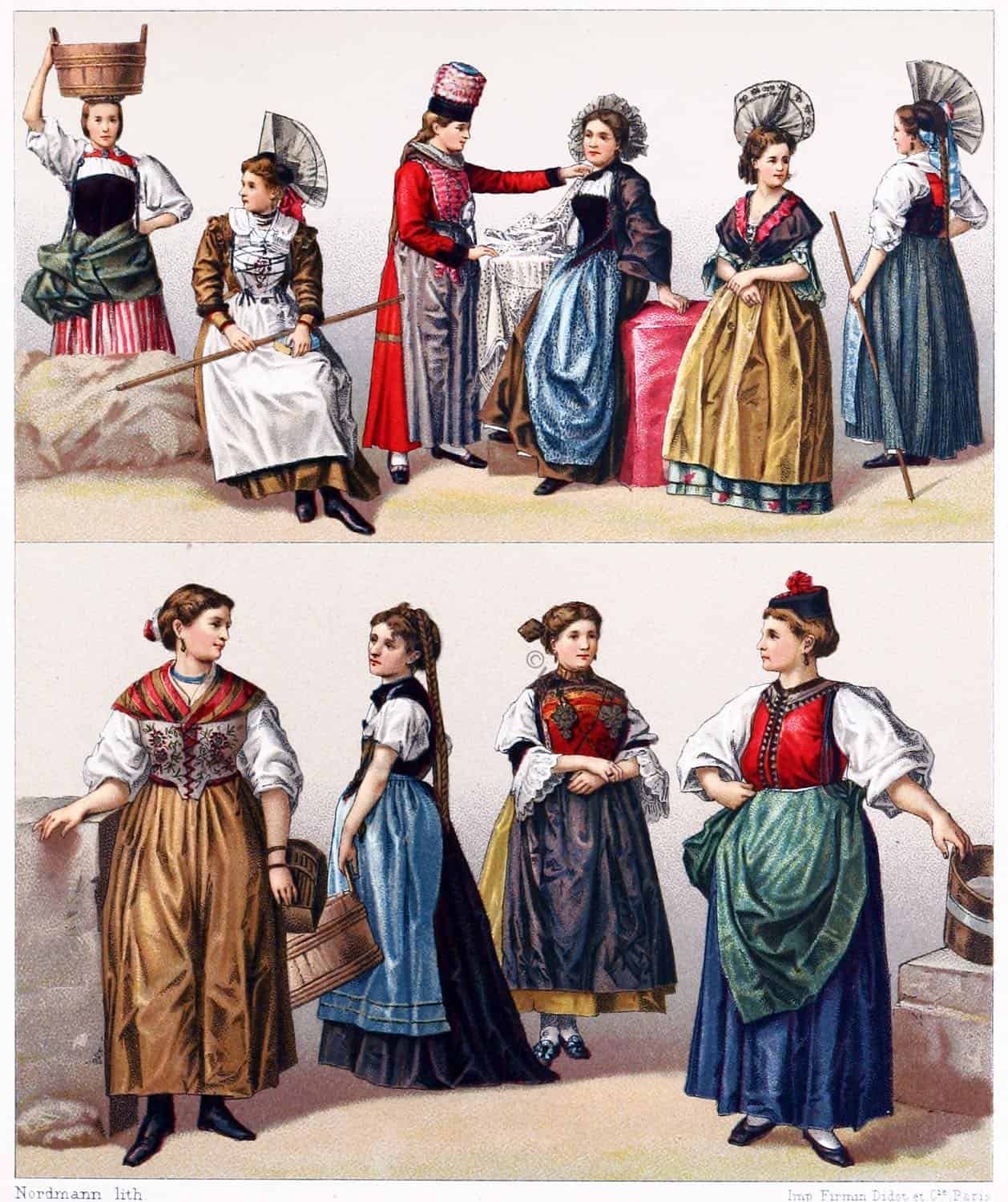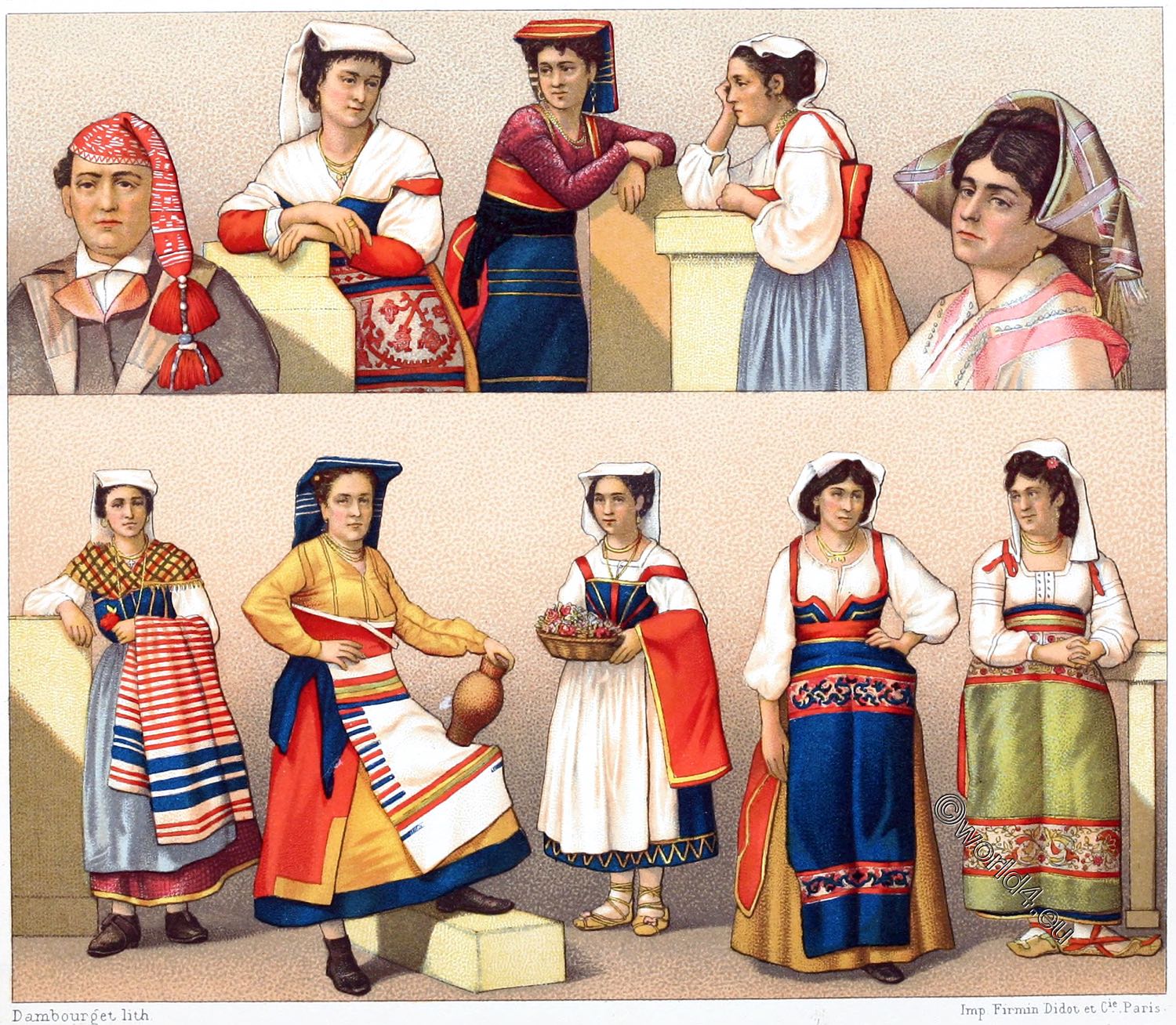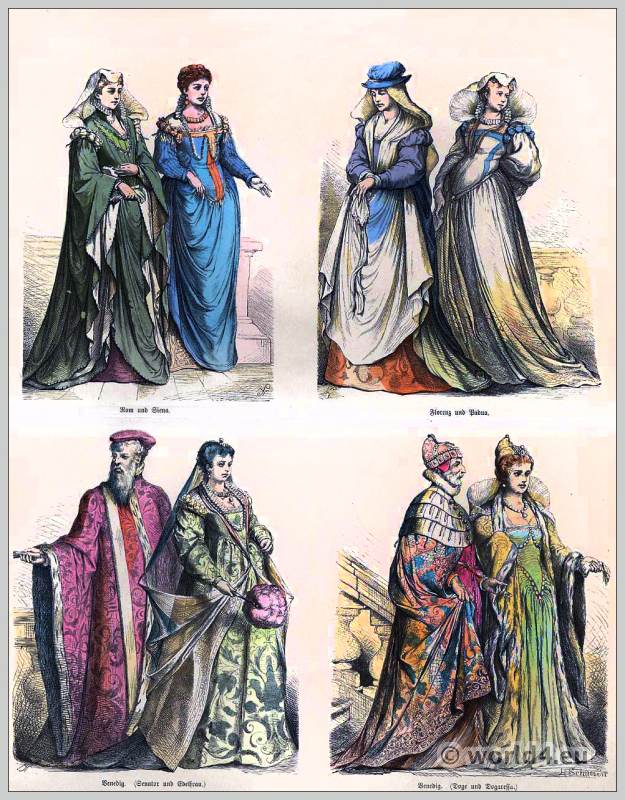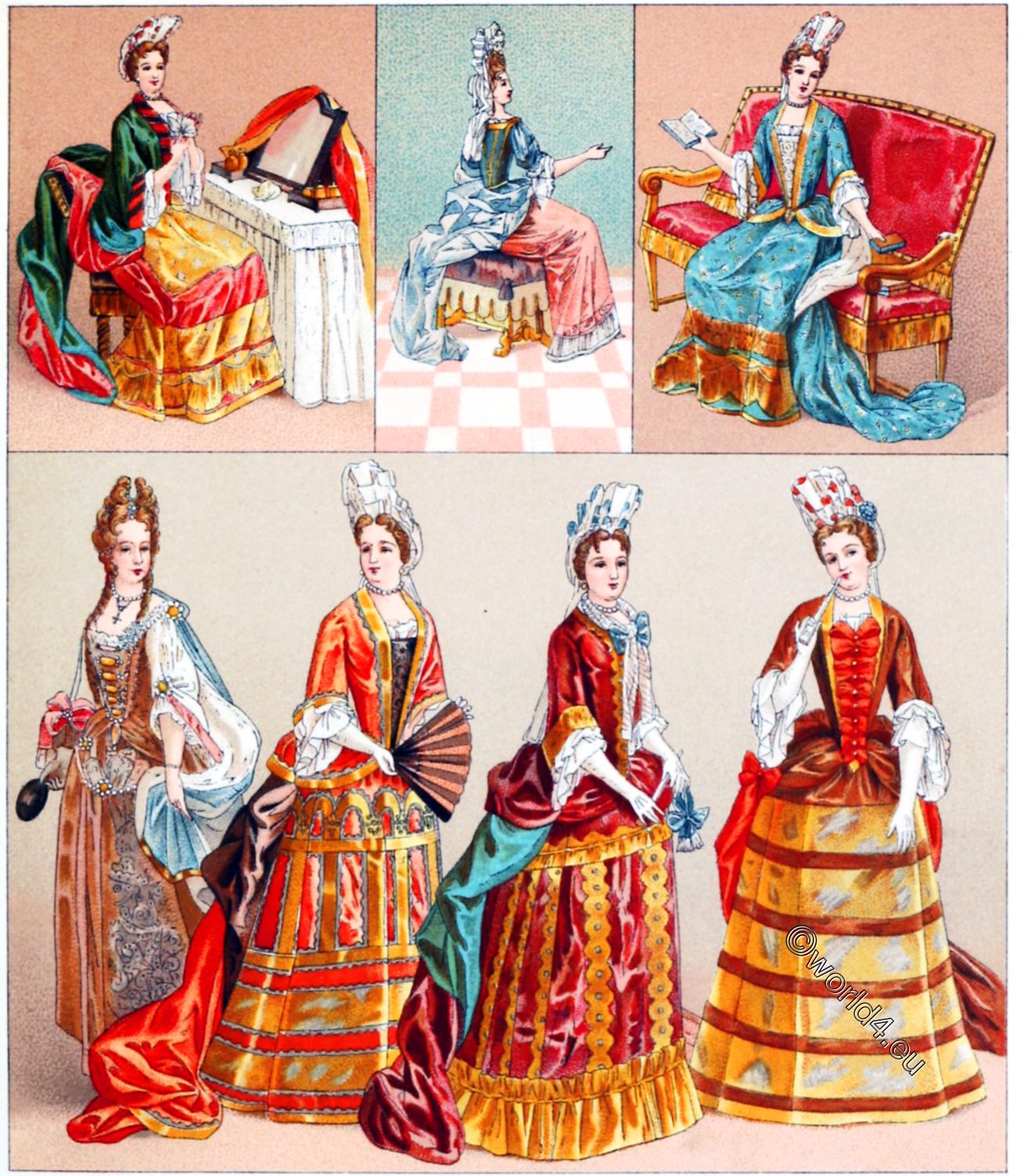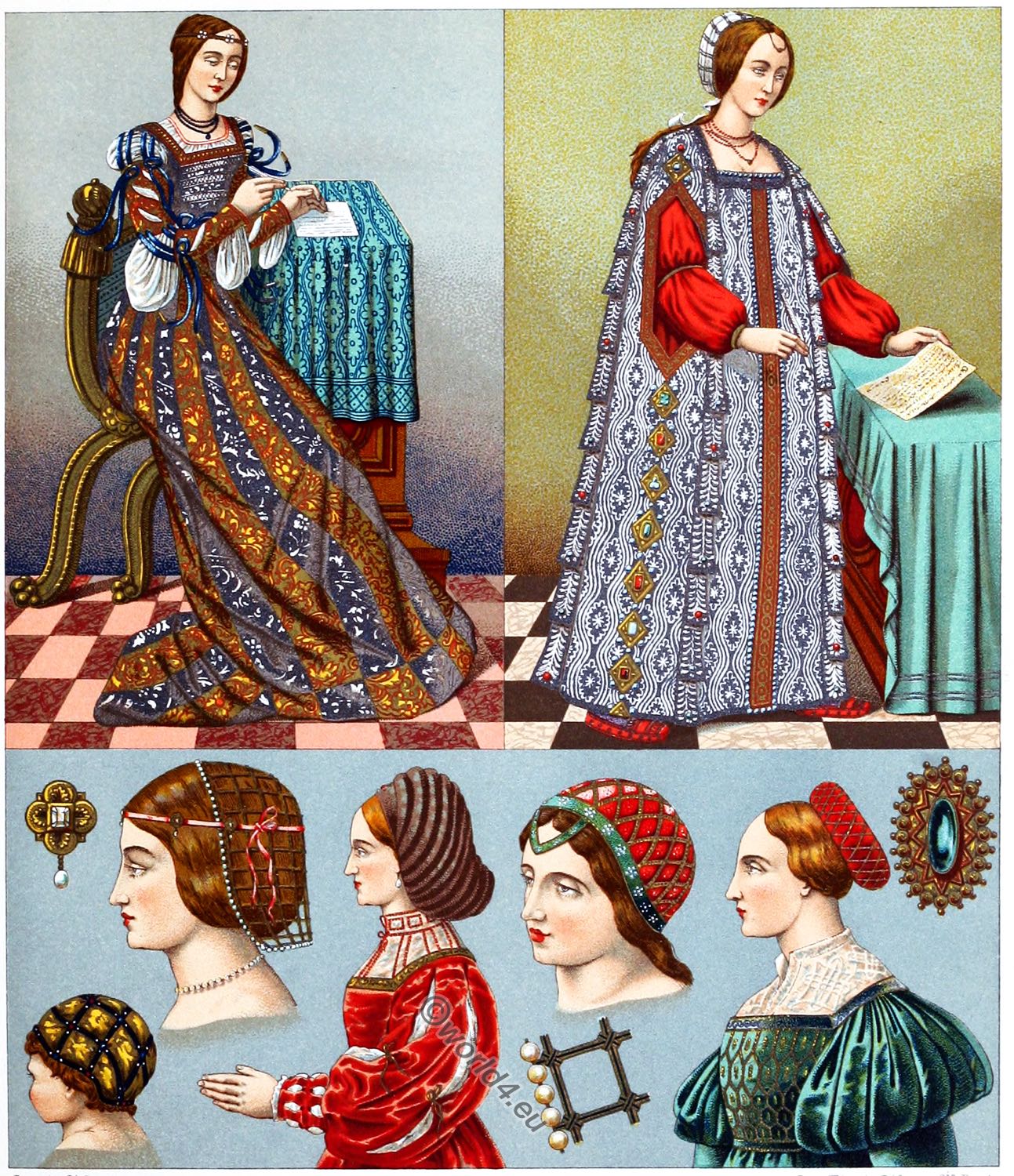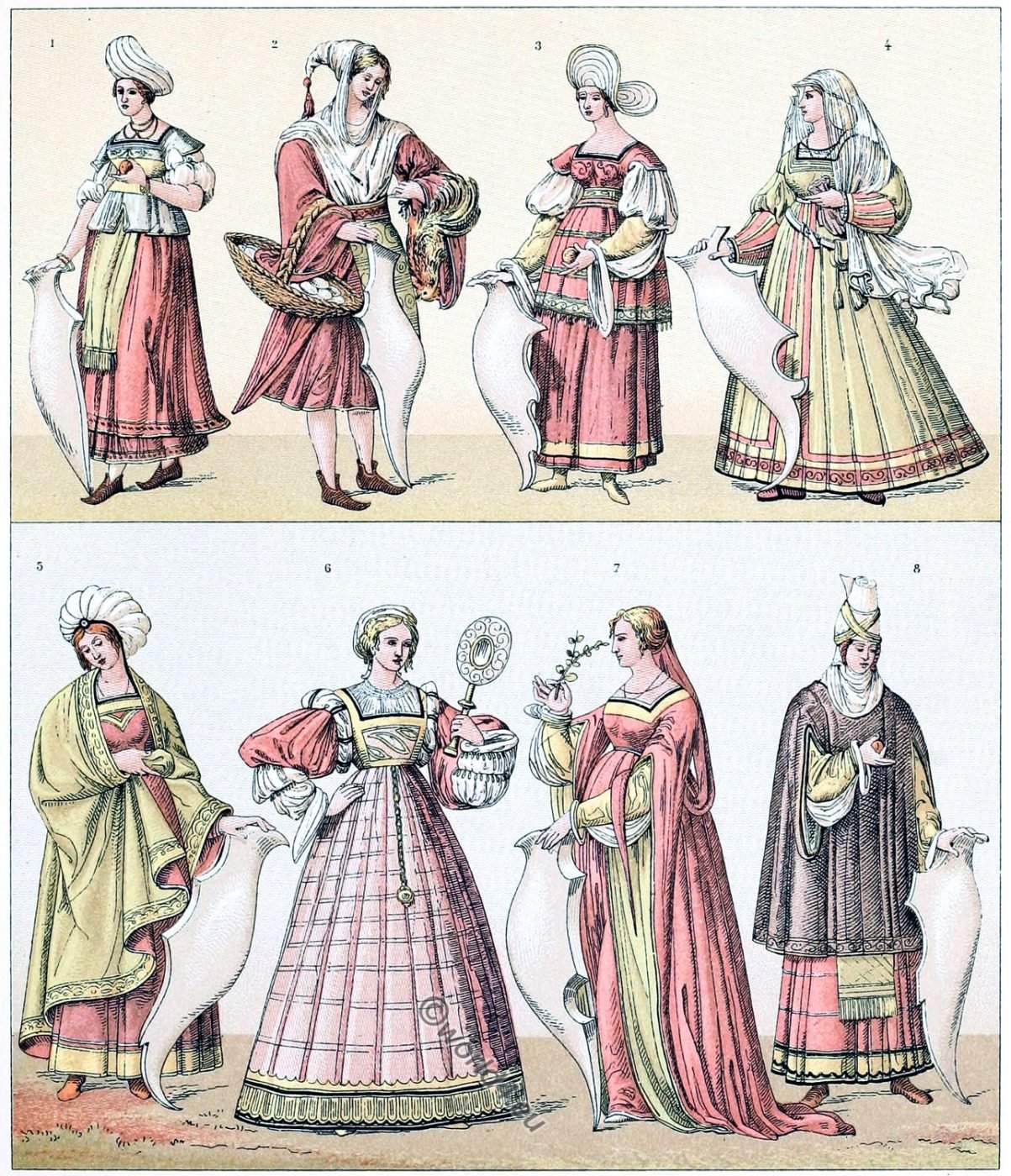
ITALY. WOMEN’S DRESSES. ACCORDING TO LOCAL TRADITIONS AND SOCIAL STATUS.
The fashion at the beginning of the XVI century.
In the original paintings, each of the coats of arms held in the hands of the figures shows the name of a place or the designation of a type in French. The lady without escutcheon is in a way a personification of the fashion that spread from Italy under Charles VIII, Louis XII and Francis I.
The inscriptions on the shields are as follows:
No. 1. – De Saint-Salvator. (San-Salvadore, a small town in Terra di Lavoro.)
No. 2: De Villaige. The village egg seller, general type.
No. 3: De Orenche. Auronzo, a village near Naples.
No. 4: Ferrara.
No. 5: La Juive.
No. 7: La Venitienne.
No. 8: A Saint-Jacques. (San Giacomo, name of two villages in Calabria.)
No. 1 wears a barrto of straw wickerwork; a jacket-like bodice with belt; narrow, short apron with fringes. Short skirt, which shows the petticoat. Shoes on the feet without stockings.
No. 2. A wide bonnet with tassel; wide coat; short skirt; bare feet in slit laced boots.
No. 3. Hat made of corn straw with the front turned up. Jacket with long lap. The sleeves of the shirt puffed on the upper arm and visible through the slit of the overarm covering the forearm. Short skirt. High, closed boot.
No. 4. Long veil falling down at the back over the hairnet; moirée or atlas robe with brocade or velvet stripes; under the square cut bodice the collar of the shirt; fine neck ribbon, double on the side; belt pocket, sandal-like slipper for the street
The balzo
No. 5. Round diadem-like balzo. The balzo is a bulbous cap, after Vecellio: “fatto dirame, et rotondo à guisa di diadema; et sopra questo mettevano una cuffia tessuta d’oro et di seta” and later in another costume, Vecellio says: “il balzo in testa, molto variato di colori; et era à opera, tessuto d’oro et di seta con fogliami di rose et altri lavori”.
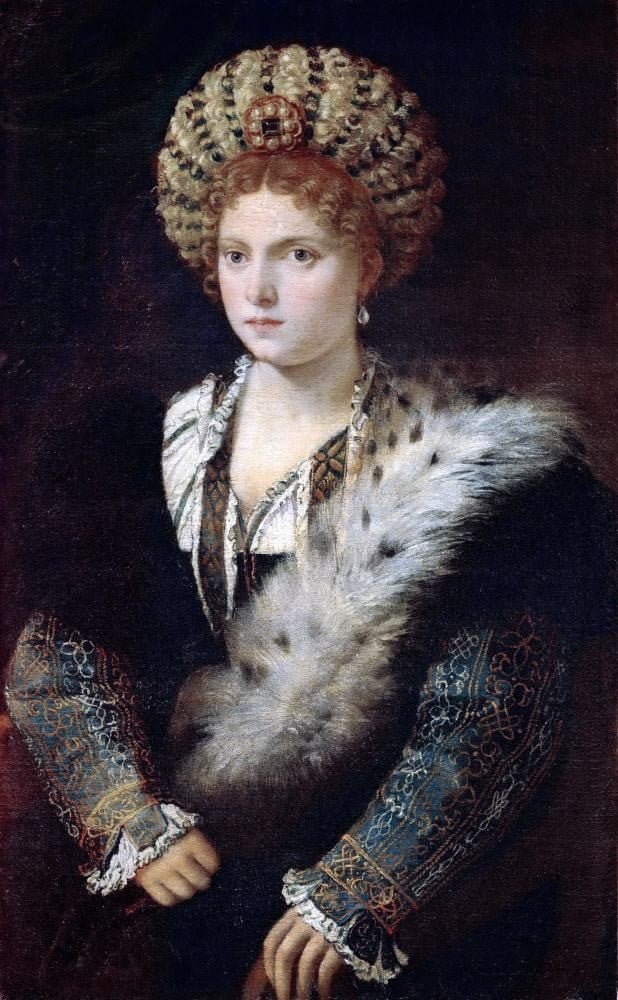
According to the drawing given by Vecillio, this headdress corresponds exactly to the hairstyle that adorns the Marchioness of Mantua in Titian’s portrait. According to Thausing’s more recent investigations, it is undoubtedly the same woman as the Bella di Tiziano and the Venus of the Tribuna.
Hefner-Altenneck, Costumes of the Christian Middle Ages, III. Abt., sheet 103, gives a drawing of this beautiful picture with the very clear representation of the Balzo. Likewise the beautiful hand drawing of Leonardo da Vinci in the Uffizi shows the Balzo covered by a net on a wavy hair-crown. But we already find the Balzo in a particularly large form, perhaps without the metal frame, only as a bulge, in the pictures of the Gothic period in Florence, Pisa, and Siena.
No. 6: The simple costume needs no further description. According to Vecellio the wide robe is held by iron bars.
No. 7. the long veil is worn over the left arm.
No. 8. This costume is the oldest and reminds in its form of the Illyrian origin of the inhabitants of Calabria. The high cap resembles the tiara or mitra, whose veil-like continuation could be used to cover the face and chin. The round coat with openings for the head and the arm, the jacket covering all body shapes, show allusions to the oriental costume as it was worn by women on the streets.
The figures are 0.18 cm high in the original. They are taken from miniatures of a manuscript in the National Library. Their origin cannot be determined exactly, as the notes in question have been lost to the editor. In any case they belong to one of the following series: Les Femmes renommées de Boccace, Manuscript from the end of the XV century, no. 6801; les Triomphes des Vertus, Manuscript executed for Luise of Savoy, no. 6809; or l’Archiloge Sophie, Manuscript no. 6808, from the first years of the XVI century.
Source: History of the costume in chronological development by Albert Charles Auguste Racinet. Edited by Adolf Rosenberg. Berlin 1888.
Related
Discover more from World4 Costume Culture History
Subscribe to get the latest posts sent to your email.

